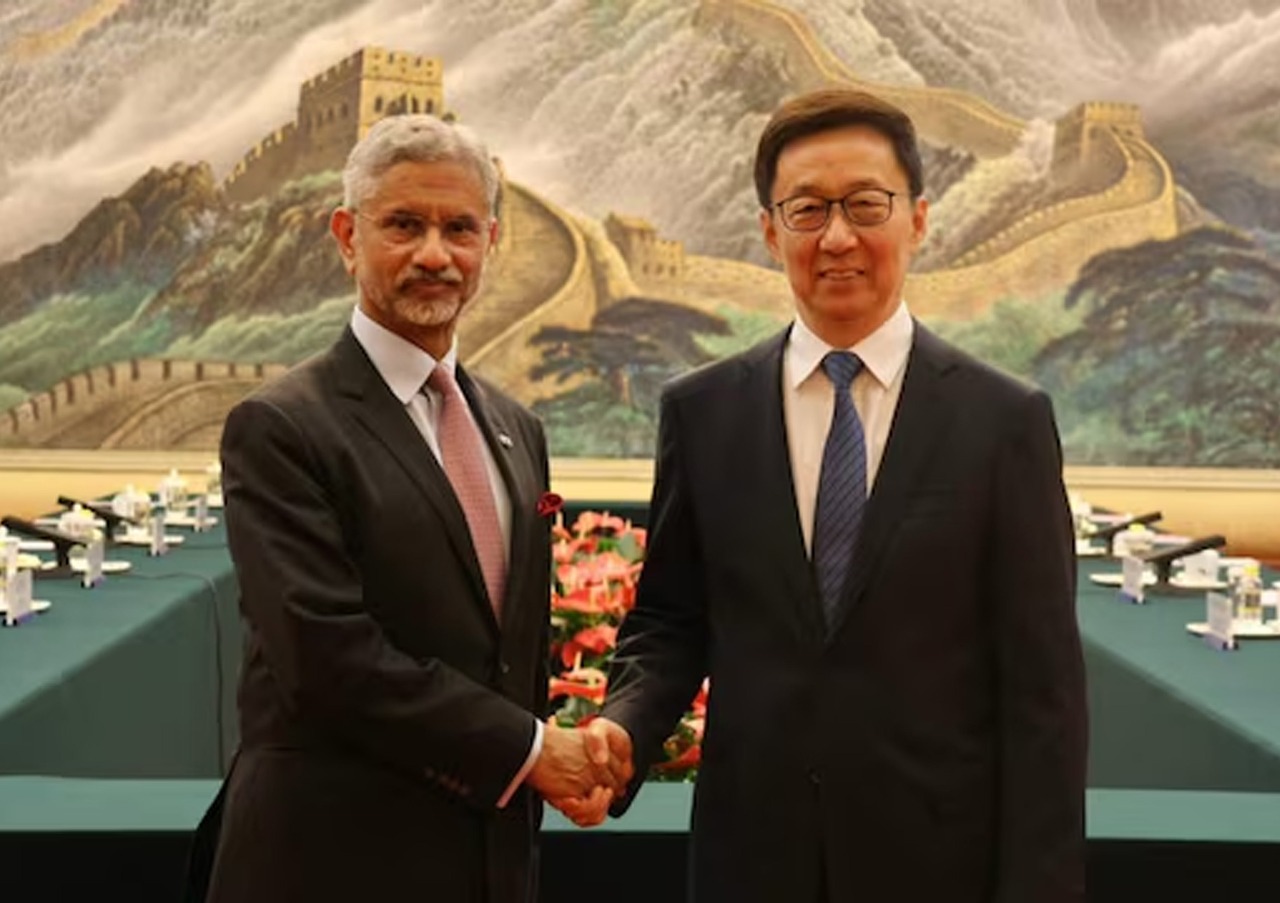
The recent visit to Beijing by Indian External Affairs Minister S. Jaishankar has drawn a lot of attention from Chinese media and internet sites, with many analysts interpreting it as a change in New Delhi's approach to China. In the run-up to the Shanghai Cooperation Organisation (SCO) Foreign Ministers' Meeting, Jaishankar made his first trip to China since the deadly clashes in Galwan in 2020.
Chinese analysts have interpreted Jaishankar's unusual protocol break, which he made 72 hours before the official SCO proceedings began. As an indication of urgency and potential compromise. He was welcomed by Chinese Foreign Minister Wang Yi in the Great Hall of the People's Fujian Room, which is symbolically decorated with a mural of the Himalayas that some have interpreted as a visual reminder of China's firm position on territorial issues like Tibet and the Line of Actual Control.
On Chinese social media platform Weibo, the hashtag “Indian External Affairs Minister visits China after five years” trended widely. One popular post commented: “India appeared to act quickly in an effort to appease China.” Observers noted a shift in tone from Jaishankar’s previous hardline rhetoric. His past remarks on neighbouring countries needing to “obey or pay the price” were replaced with calls for dialogue, mutual respect, and an emphasis on “each other’s core interests.”
Several Chinese analysts have linked the softened tone to what they term India’s “triple anxiety”—a combination of a rare earth minerals supply crisis, instability in maritime trade routes, and its perceived diminishing influence within multilateral platforms like BRICS and the SCO. They suggest India may be seeking eased export restrictions on rare earth materials, especially in sectors like electronics and pharmaceuticals, as part of a broader economic strategy.
Commentators such as Xie Chao of Fudan University warned that India’s closer alignment with the United States would further strain its ties with China. “The balancing act is nearing its end,” he said. Meanwhile, Professor Jin Cangrong of Renmin University accused India of holding hegemonic ambitions in South Asia, asserting that border tensions stem not from Chinese aggression but from India’s own unresolved colonial-era mindset.
Another prominent voice, Liu Zongyi from the Centre for South Asian Studies in Shanghai, labelled India a “chronic internal cancer” in the SCO and accused it of obstructionism and opportunism. He urged Beijing to focus on reforming the SCO rather than appeasing Prime Minister Narendra Modi’s government.
The larger Chinese narrative implies that Jaishankar's visit is being construed as an act of economic realism rather than strategic resilience, notwithstanding the critical tone. India's outreach is portrayed in Chinese discourse as being motivated more by necessity than by shared diplomatic interests.
Indian officials, however, insist that the interaction is in line with New Delhi's long standing focus on strategic autonomy, sovereignty, and dialogue. Analysts point out that the Chinese interpretation ignores the complexity of Indian foreign policy, which is determined by calculated national interests rather than by pressure from outside sources or appeasement.